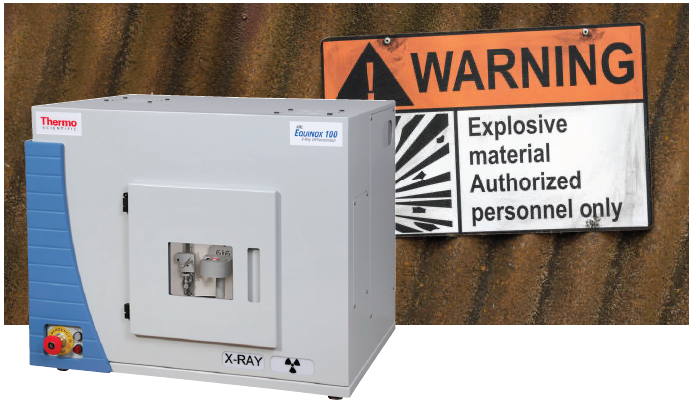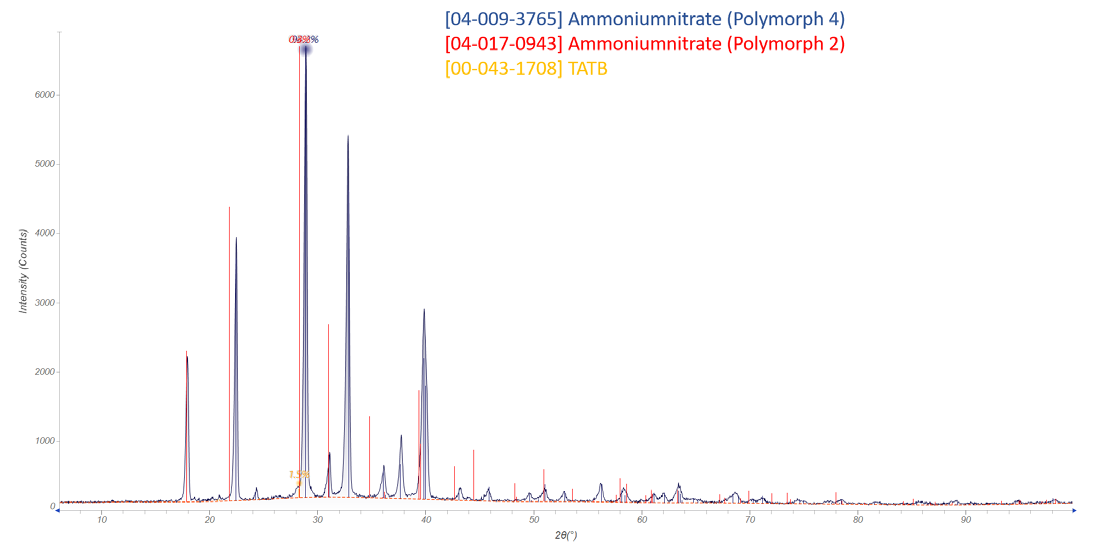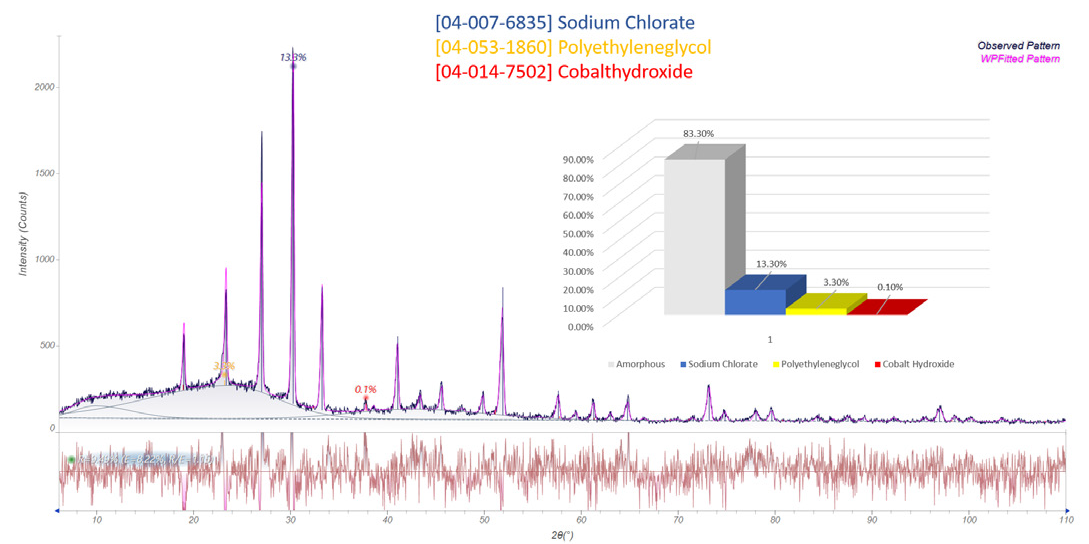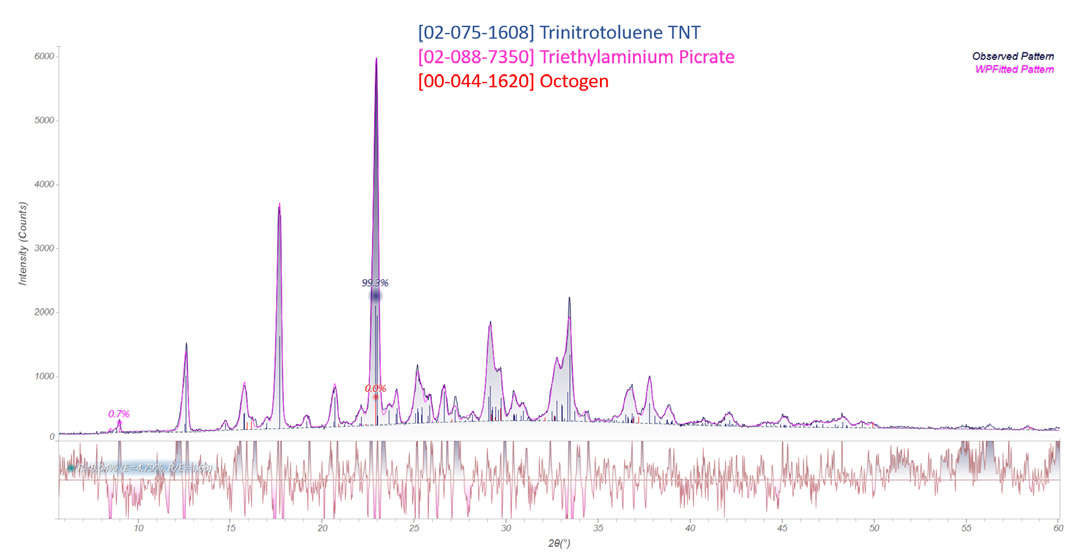The accurate analysis of explosives is an essential element of forensic science. The ever-present threat of attacks by criminals and terrorist organizations has meant that continuous improvement of explosive detection and analysis techniques is vital, even though case numbers are relatively low when compared against other forensic applications such as drug analysis.
As well as forensic work within law enforcement agencies, there is an increasing demand from military bodies and contractors that require mobile labs in hot zones where there is an ongoing threat of IEDs (improvised explosive devices).
Approximately 60% of forensic cases are reported to involve intact explosive devices such as grenades, IEDs, or illegal fireworks.
A key goal in forensic explosives investigations lies in ascertaining the origin of the explosive and in clustering similar samples. Explosive materials often include side phase as a result of the synthesis, storage, and mixing of the material.
Investigations on remains from explosions are also common, requiring analysis of parts of casings or other elements before drawing conclusions about the type of explosive device in question.
X-ray diffraction (XRD) is a potent means of analyzing crystalline materials and mixtures, particularly useful in identifying explosive materials. The ARL™ EQUINOX 100 benchtop XRD instrument from Thermo Scientific™ is a versatile and transportable tool that is well suited to meeting the requirements of forensic science.

Figure 1. ARL EQUINOX 100 diffraction system. Image Credit: Thermo Fisher Scientific - Elemental Analyzers and Phase Analyzers
Instrument
The ARL™ EQUINOX Series is part of a portfolio of XRD instruments that ranges from simple, easy-to-use benchtop systems suited to routine analysis through to more complex floor-standing, research-grade systems.
The ARL™ EQUINOX 100 uses a custom-designed 50 W (Cu or Mo) or 15 W Co high-brilliance micro-focus tube with mirror optics, meaning that the instrument does not require an external water chiller.
The unit is easily transportable between laboratories or out into the field, without the need for any special infrastructure. It can be operated using low-grade power sources or batteries due to its low power consumption (100 W).
The ARL™ EQUINOX 100 (Figure 1) offers rapid data collection, particularly when compared to other diffractometers. This is primarily due to its distinct curved position sensitive detector (CPS) that is able to measure all diffraction peaks simultaneously, in real-time.
Experimental
Law enforcement authorities provided a range of powdered explosive samples and these were measured as is, in reflection using an ARL™ EQUINOX 100 with Cu Kα radiation. Measurement took around 5 minutes to complete.
Qualitative and quantitative data evaluation was performed using the MDI JADE 2010 and the ICDD pdf 4 Organics database. Crystalline and amorphous part quantification was carried out using WPF Rietveld refinements.
Results
A significant number of explosive-related compounds are mixtures of crystalline and amorphous parts (for example, binders). These mixtures may contain several components such as reductants, oxidants or different explosives mixed together for improved performance.
It is sometimes possible to detect contaminants from storage or synthesis, particularly when investigating improvised explosives.

Figure 2. Ammonium nitrate (10 min measurement time). Image Credit: Thermo Fisher Scientific - Elemental Analyzers and Phase Analyzers
Ammonium nitrate is widely available due to its use as a fertilizer. Figure 2 displays a sample of ammonium nitrate, which contains traces of Polymorph 2 and TATB (triaminotrinitrobenzene) as well as a notable amount of Polymorph 4.

Figure 3. Sodium Chlorate mixture (10 min measurement time). Image Credit: Thermo Fisher Scientific - Elemental Analyzers and Phase Analyzers
A further example of a widely available which can be easily used as an explosive is sodium chlorate. Figure 3 displays a mixture of sodium chlorate with PEG (polyethylene glycol), as well as traces of cobalt hydroxide. Approximately 80% of the sample is amorphous, and this is most likely part of the PEG.

Figure 4. Trinitrotoluene TNT (10 min measurement time). Image Credit: Thermo Fisher Scientific - Elemental Analyzers and Phase Analyzers
TNT (trinitrotoluene) is one of the most commonly used explosives in military applications, and a large number of mixtures with other explosives are currently used. Figure 4 displays a TNT sample which includes traces of octogen and triethylaminium picrate.
Conclusion
The ARL™ EQUINOX 100 XRD is able to collect data on explosives within a measurement time of 5 minutes. A combination of the MDI JADE 2010 and the ICDD pdf 4 Organics database facilitates both qualitative and quantitative phase analysis (WPF Rietveld refinement) of a wide range of samples.
Results clearly identify the type of explosive material and trace phases. The ARL™ EQUINOX 100’s low footprint and energy demands, coupled with its rugged design, mean that it is ideally suited for use in a mobile lab in a harsh environment.
Acknowledgments
Produced from materials originally authored by Dr. Simon Welzmiller, Application Specialist, and Dr. Henry Pilliere, Research Manager at Thermo Fisher Scientific.

This information has been sourced, reviewed and adapted from materials provided by Thermo Fisher Scientific - Elemental Analyzers and Phase Analyzers.
For more information on this source, please visit Thermo Fisher Scientific - Elemental Analyzers and Phase Analyzers.